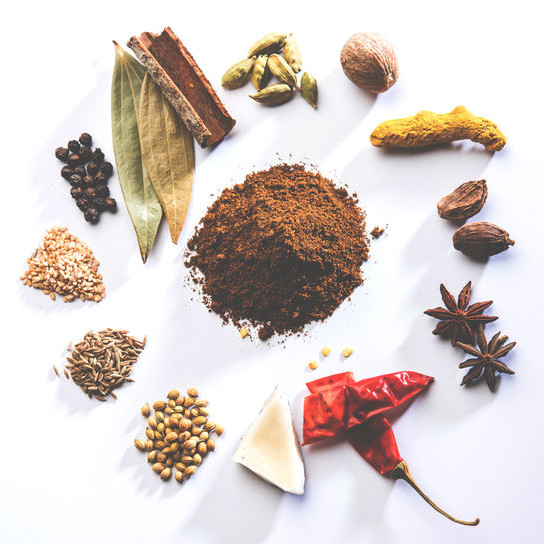
Natural Flavors
What are Natural Flavors?
Natural flavors are food additives that provide particular tastes or aromas to food products.1 They are used in a wide variety of baked goods and beverages to enhance or impart a desirable flavor that lasts through the shelf life product.
Natural flavors are available in several forms:
- Oil-based
- Water-based
- Alcohol-based
- Powder
Origin
Flavorings such as essential oils and spices have been added to food products since ancient times. The Persian physician Avicenna pioneered extraction of aromatic essential oils from plants. In the 18th century and with advances in food processing, the flavor industry recognized the need for enhancing and maintaining the flavor of food products throughout the products shelf life.2
Most processed food products contain some type of food flavoring, artificial or natural. The current wave of health conscious consumers and all-natural products have increased the demand for natural flavorings.3
Function1
According to the FDA, the term “natural flavor” means, “the essential oil, oleoresin, essence or extractive obtained from a spice, fruit, vegetable or vegetable juice, edible yeast, herb, bark, bud, root, leaf or similar plant material, meat, seafood, poultry, eggs, dairy products, or fermentation products.”1
Natural flavor has several functions in baked goods:
- Taste: enhancing the innate taste of baked goods, masking undesirable tastes or adding unique tastes
- Aroma: provides a pleasant and appealing aroma
- Increase shelf life and stability: mainly with plant extracts that possess antimicrobial properties
Nutrition
Natural flavors in the proportions used in baked goods don’t provide a significant nutritional value. Some natural extracts such as mint and cinnamon may provide some health benefits mainly anti-inflammatory properties. Some natural flavorings such as vanilla, nuts, coconuts, cinnamon may cause allergies in some consumers
Commercial production
Natural flavors are obtained through different processes depending on the source and final form.2
- Liquid extracts: are separated through solvent extraction or distillation followed by purification. Supercritical fluid extraction is a novel environmentally-friendly approach to flavor extraction with no residual solvents.
- Powdered flavorings: Liquid extracts can be dried using spray- or freeze-drying.
In addition to plant extracts, natural flavors includes those made via enzymatic and microbiological (bateria, fungi and yeast) processes.2
Application
In baked products, dry flavorings are best added to dry mixes for easy scaling and good distribution. In wet mixes, aqueous or lipid-based liquid flavors provide an easy disbursement and measuring.4
Water or alcohol based flavoring may lose their impact during high temperature processing and baking. Therefore, stabilized powdered or encapsulated versions are often used. They also tend to have a longer shelf life and can be baked at higher temps. Oil based flavorings disperse best when mixed with the fat portion of a recipe.4
Typical natural flavors in bakery products include vanilla, cinnamon, ginger, garlic powder, almond essence and many fruit extracts.
FDA regulations
Natural flavors can be safely used when added in the minimum amounts required for their intended physical effect and considering all good manufacturing practices. They may be used individually or as a combination of other GRAS natural flavors.5
Natural food flavoring must be declared as follows: “In cases where the flavor contains a solely natural flavor(s), the flavor shall be so labeled, e.g., strawberry flavor, banana flavor, or natural strawberry flavor,” under FDA CFR Title 21.6
References
- Grumezescu, A.M., and Alina Maria Holban, eds. Natural and Artificial Flavoring Agents and Food Dyes. Vol. 7. Academic Press, 2017, pp. 1-7.
- Selvamuthukumaran, M., and Yashwant V. Pathak, eds. Flavor Development for Functional Foods and Nutraceuticals. CRC Press, 2019, pp. 1-4.
- Hui, Y. H. Handbook of Food Science, Technology, and Engineering. Boca Raton: Taylor & Francis, 2006.
- Figoni, P. How Baking Works: Exploring The Fundamentals Of Baking Science. 3 rd ed., John Wiley & Sons, Inc., 2011, pp. 309-317.
- Food and Drug Administration (FDA). US Department of Health and Human Services. CFR Code of Federal Regulations Title 21, Part 172 Food Additives Permitted For Direct Addition To Food For Human Consumption, https://www.accessdata.fda.gov/scripts/cdrh/cfdocs/cfcfr/cfrsearch.cfm?fr=101.91, Accessed 23 June 2020.
- Food and Drug Administration (FDA). US Department of Health and Human Services. CFR Code of Federal Regulations Title 21, Part 501 Animal Food Labeling, https://www.accessdata.fda.gov/scripts/cdrh/cfdocs/cfcfr/cfrsearch.cfm?fr=501.22, Accessed 23 June 2020.

